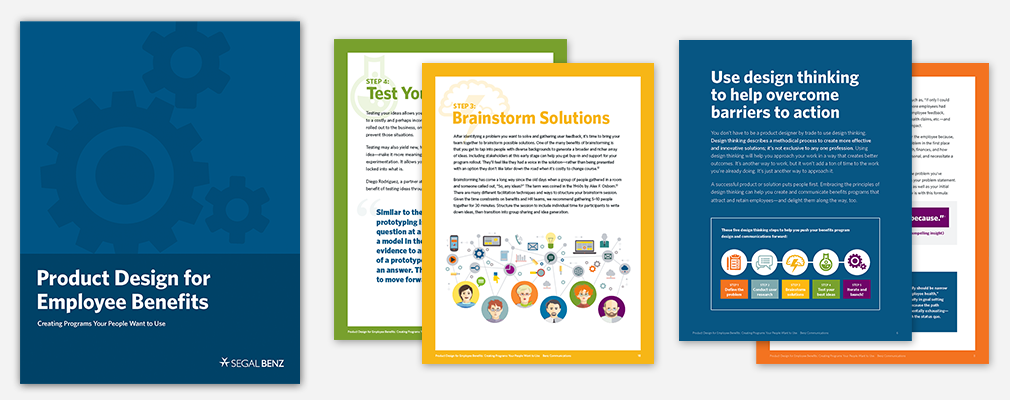
Back in the mid-90s, Procter & Gamble knew they had a problem. They thought people were unhappy with their floor cleaner options. But then a design firm helped them figure out what was really going on: People didn’t enjoy the taxing process of mopping the floor. Once P&G knew the real problem, they were able to devise a solution, aka Swiffer.
The secret to P&G’s success was understanding people’s motivations. It’s an approach known as product-design thinking, and it can be applied to a wide range of endeavors.
Learn how you can start thinking like a product designer—and take your benefits programs and communications to the next level—by mastering these 5 steps:
Benefits and HR professionals fundamentally want to solve problems to make employees’ lives better. Designing benefits programs that are easy to use and make a real difference in people’s lives is a powerful way to do that.
To do this most effectively, employers must understand what drives people to act and how to change behavior. They must understand what employees want from their workplace and benefits, where they get stuck in using the programs the employer provides, and what makes people want to use their benefits. They must be able to assess what has been successful in the organization, as well as what hasn’t, and apply that to future efforts.
These are the core skills of design thinking. It’s what product designers at the world’s largest and most innovative companies use—along with the latest technology and psychology principles—to hook and engage users.
Download our guide and start thinking like a product designer.
The information you provide will be used in accordance with the terms of our privacy policy.
We partner with organizations that value their people first.
We are proud to be part of the Segal family.